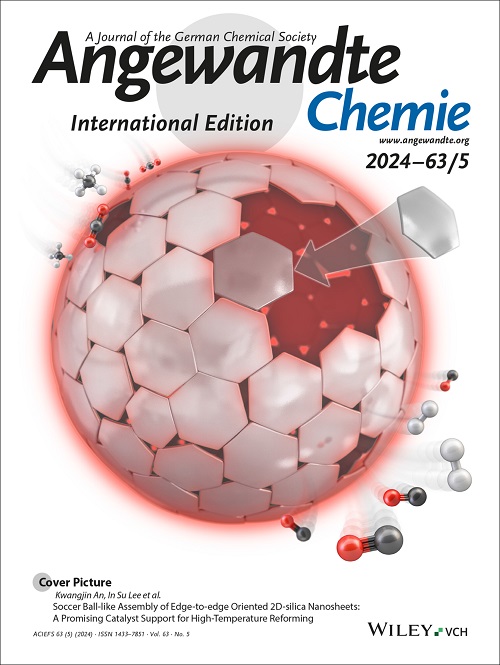Well‐Defined Redox‐Active Hyperbranched Polymers for Flow Batteries: Harnessing Self‐Condensing Vinyl Copolymerization by Flow Chemistry
IF 16.9
1区 化学
Q1 CHEMISTRY, MULTIDISCIPLINARY
引用次数: 0
Abstract
The increased adoption of renewable power necessitates the development of grid‐scale storage solutions, with aqueous redox flow batteries (RFBs) at the forefront. Despite their potential, performance limitations arising from high solution viscosity at high concentrations of active material and rapid degradation due to active material crossover continue to pose challenges. Here, we use flow chemistry to create redox‐active hyperbranched copolymers (HBCs), which exhibited substantially improved suppression of crossover and enhanced rheology behaviors. The distinct reaction dynamics of flow chemistry facilitated the efficient and monomer‐independent control over self‐condensing vinyl polymerization, yielding well‐defined HBCs with remarkably low dispersity. This strategy effectively enhanced the uniformity of the redox‐active HBCs, leading to significantly reduced crossover and accelerated diffusion rates. The RFBs equipped with our redox‐active HBCs exhibited long‐term stability, mapping a pathway towards practical application of polymer‐based technologies as well as highlighting the unique advantages of the flow chemistry techniques in high‐precision electrolyte design.用于液流电池的良好定义的氧化还原活性超支化聚合物:利用流动化学利用自凝乙烯基共聚
随着可再生能源的日益普及,电网级储能解决方案的开发势在必行,其中以水氧化还原液流电池(rfb)为代表。尽管具有潜力,但由于高浓度活性物质的高溶液粘度和活性物质交叉导致的快速降解而导致的性能限制仍然构成挑战。在这里,我们使用流动化学来制造氧化还原活性超支化共聚物(hbc),其表现出显著改善的交叉抑制和增强的流变行为。流动化学的独特反应动力学促进了对自凝聚乙烯基聚合的有效和单体独立控制,产生了具有显著低分散性的定义良好的hbc。这种策略有效地增强了氧化还原活性HBCs的均匀性,从而显著减少交叉和加速扩散速率。配备氧化还原活性hbc的rfb表现出长期稳定性,为聚合物基技术的实际应用指明了道路,并突出了流动化学技术在高精度电解质设计中的独特优势。
本文章由计算机程序翻译,如有差异,请以英文原文为准。
求助全文
约1分钟内获得全文
求助全文
来源期刊
CiteScore
26.60
自引率
6.60%
发文量
3549
审稿时长
1.5 months
期刊介绍:
Angewandte Chemie, a journal of the German Chemical Society (GDCh), maintains a leading position among scholarly journals in general chemistry with an impressive Impact Factor of 16.6 (2022 Journal Citation Reports, Clarivate, 2023). Published weekly in a reader-friendly format, it features new articles almost every day. Established in 1887, Angewandte Chemie is a prominent chemistry journal, offering a dynamic blend of Review-type articles, Highlights, Communications, and Research Articles on a weekly basis, making it unique in the field.

 求助内容:
求助内容: 应助结果提醒方式:
应助结果提醒方式:


